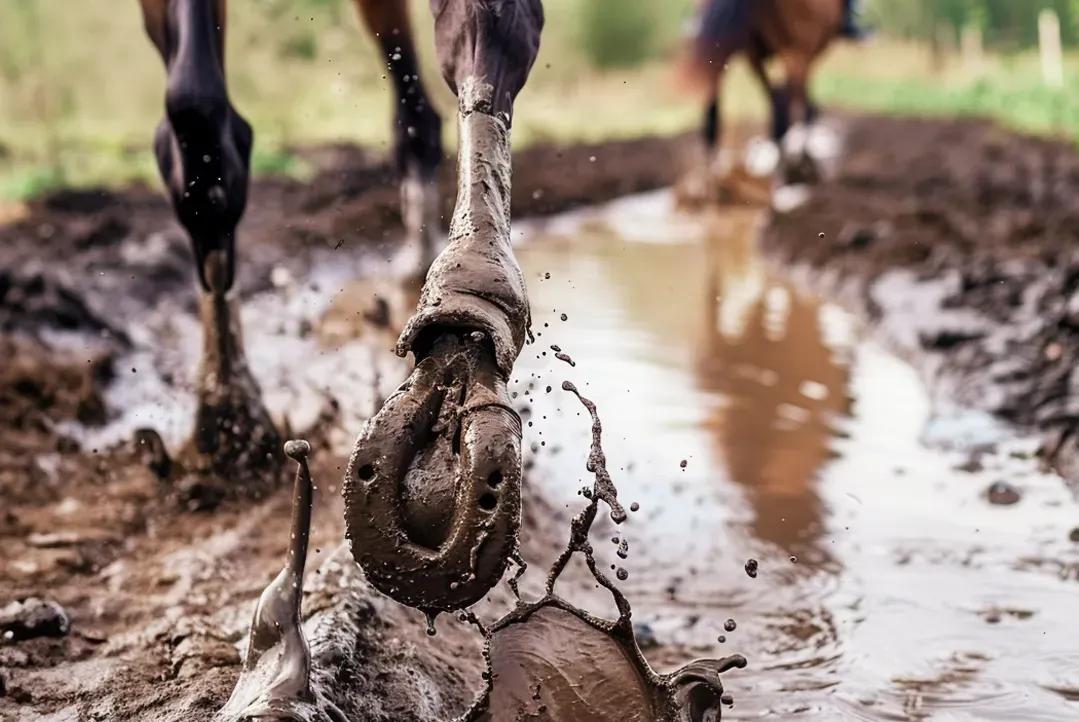
Taps for riding cleats provide traction
When you imagine a tap, what kind of environment do you have in mind? Probably some kind of workshop, perhaps an industrial hall or even the loading area of a panel van that a tradesman uses for his daily work. But taps can also be found in many places where you wouldn't expect to find them at first glance. And we want to take a closer look at one such place in this article.
Do you have any idea where we're going today? It's going to be muddy, that much can be revealed. It might also smell a little stenchy. And what's that snorting sound? That's right, we're in the stables. But it's not about the construction of farm buildings or new hinges for the stall doors - it's actually about the animals themselves. More specifically, their hooves. There, thread cutters for riding studs ensure that the horses have enough grip. Still can't get your head around it? Then read on.
Threads on riding studs for sufficient grip
Grip - you are probably more familiar with this term from motorsport. You could also say traction. And the horse needs it just as much as the Ferrari, at least when it is traveling at the right speed or on difficult terrain. And the horse gets this extra grip from threaded riding studs that can be screwed onto the bottom of the horseshoe. The idea is similar to the studs used in soccer, except that horses - unlike footballers - cannot take their shoes off after the work is done. The thread on the riding stud can solve precisely this problem.
Threaded riding studs are also known as hoof studs, horse studs or screw studs. They are available in a wide variety of designs for all kinds of ground, weather conditions and surfaces. Thread cutting plays a major role in riding cleats because the screw mechanism makes them easy to change and clean. Threaded riding studs are an important aid, especially in competition riding and other areas of professional equestrian sport, to get the best out of the noble steeds. The practical screw-in solution enables the rider and his team to react flexibly to changing conditions.
These threads are used for riding studs
Specialist dealers now offer a wide range of threaded riding studs. To ensure that they always fit and are easily interchangeable, the same threads are usually used for riding studs. This means that the farrier knows how big the thread needs to be and it is also easier to buy replacement studs with threads.
Three thread sizes in particular are used for riding studs. The M 10 and M 12 threads are dimensions of the metric standard thread with a flank angle of 60°. The BSW 3/8" is a size of the imperial British Whitworth standard thread with a flank angle of 55°. In addition to these three most common thread sizes, other dimensions are also occasionally used, so it is always important to take a close look before buying.
How the thread for the riding cleat is created
The threaded riding stud naturally requires a counterpart into which it can be screwed. This can be found on the horseshoe. The threads for the riding studs are cut into the horseshoe before the horse is shod. Usually two riding studs per shoe are sufficient, but sometimes four are needed.
The receiving thread for the riding tunnel does not have to be prepared on site in the horse stable, which is good news for all those who do not own mobile equipment. Form B machine taps are well suited as a tool. The material and coating of the tap for riding studs also depends on the material from which the horseshoes are made. Traditionally, a lot of steel is still used here, but lighter aluminum is also often used for racehorses. Plastics are also becoming increasingly popular for horseshoes.
Once you have found the right tap for the riding stud, you can get started. First, the core holes are drilled at the desired points using a twist drill. It is particularly important to ensure the correct diameter here. The tap for the riding stud is then used to create the actual thread. And finally, the riding stud should be screwed in and out of the thread to make sure that everything fits. Because once the horseshoe is on the horse, changes are time-consuming!
The farrier then shoes the horse's hoof with the prepared shoe. And if everything fits, the threaded riding studs can be attached and removed as required.
Modern farriers need thread cutters for riding studs
Modern farriers should therefore always have a thread cutter with them. Not only to install new studs with threads. Taps are also ideal for cleaning and repairing dirty or damaged threads. And this is not so rarely necessary. After all, threaded riding cleats are used precisely for the purpose of providing good grip in mud and bad weather. It goes without saying that the threads on the riding cleats also take a beating. With the right thread cutter for riding studs, the threads can often be repaired with little effort in such cases. This means that it is not necessary to replace the entire horseshoe if the stud or thread is damaged.
We don't know horses that well, but we do know threads. And that's why you will of course also find all the taps you need to attach riding studs to the horseshoe or to repair the riding stud thread in the BAER online store. Still have questions? Our friendly customer service team will be happy to help you!
